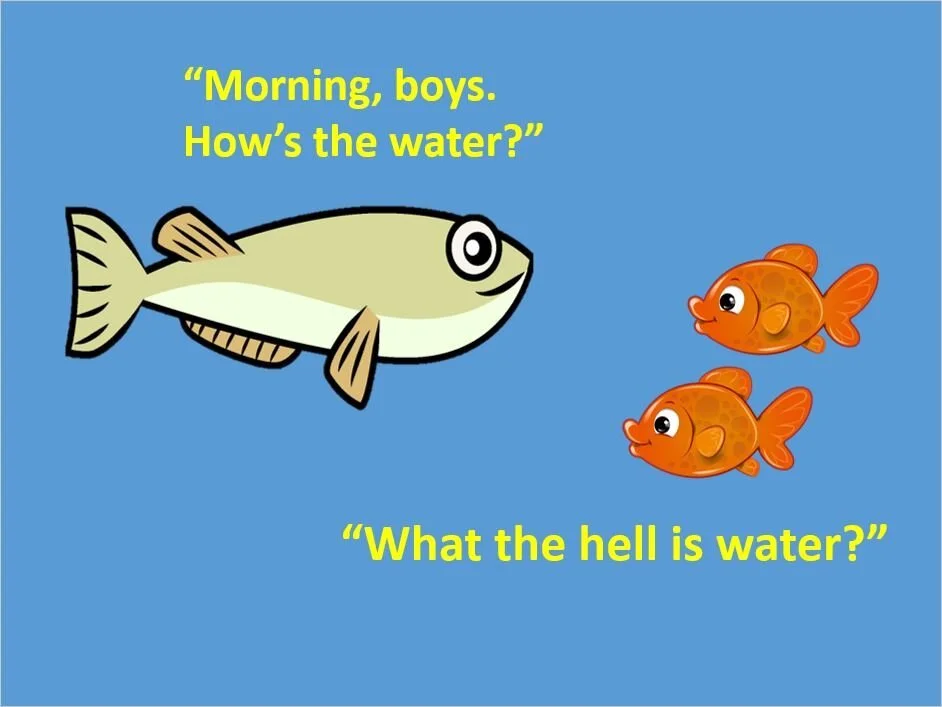
Marx, fish and advertising
Ellen Scholes
25/04/2023
Taking a leaf out of Karl Marx's book, Ellen Scholes suggests we'd be better pointing advertising at the influences on individuals vs the individuals themselves.
If Marx ever thought that his ideas would inspire advertising, I am sure the ground at Highgate Cemetery would start swelling from the force of him spinning in his grave. While I’m not here to endorse all that he said and the thinking that was born from it, he may have been right about some things. Specifically, his thinking suggests we'd be better pointing advertising at the influences on individuals vs the individuals themselves.
Let me explain…
Changing the water to influence the fish
In the preface to a Contribution to the Critique of Political Economy (1859), Marx wrote, “It is not consciousness of men that determines their being, but, on the contrary, their social being that determines their consciousness.”
We are wedded to the idea that we have free will and can exercise choice, but Marx suggests that we can only do this within our specific environment. Buying choices are exercised within financial boundaries, boundaries of knowledge, social status and physical environment. To change a person’s thinking, Marx argues there has to be an external change to their environment.
What does this mean for advertisers? Essentially, we can either operate within the social consciousness of our target audience, or, more ambitiously, seek to shift their social being to allow our products and services to appeal to them. Change the water, rather than trying to influence a fish.
Here are 5 examples.
50 Shades of Marx
Imagine a campaign trying to get people to embrace spicier bedroom activities, say by Durex. You can see it having some impact but nowhere near the dent created by the socio-cultural phenomenon that was 50 Shades of Grey. It changed the mood completely, to the point where the London Fire Brigade expressed concern about handcuff casualties and women on mum forums discussed their “Fifty Shades baby”.
Inventing smelliness
When deodorants were introduced as anti-sweat toiletries in 1910, most people thought they were unnecessary and unhealthy. Enter J. Walter Thompson and James Young who convinced Americans that smelling really bad made you unpopular and risked social pariah status. His advertisement in 1919, “Within the Curve of a Woman’s arm. A frank discussion of a subject too often avoided,” was, in Marxist terms, an example of shifting the social environment and thereby changing the consciousness of the individual. It's the difference between niche toiletries and a $18 billion industry.
Diamonds are forever
Around a similar sort of time, the British financiers controlling South African mines realised they had to tackle an increasingly saturated diamond market. So in 1938, De Beers hired Philadelphia ad agency N.W. Ayer. Their game plan was to “create a situation where almost every person pledging marriage feels compelled to acquire a diamond engagement ring.” Since, diamonds have been perceived as the ultimate gift of love and expression of commitment. De Beers and N.W Ayer ultimately changed behaviours by successfully creating an eternal emotional value surrounding the diamond. They didn’t stop there, the "two months' salary rule" has been culturally adopted after De Beers advertised it. Simple product advertising can enter in the subconscious as perceived fact rather than promotional activity.
Give your strategy wings
A more modern example can be found in soft drinks. The unlikely popularity of Red Bull can be argued as a case study in looking beyond the consumer and changing the mood and the environment that they exist in. It could have been marketed directly as pure energy - and indeed it was - but I would argue that when Red Bull came to be synonymous with extreme sports by honouring everything from F1 to space jumps that it found its cultural foothold and changed the broader consciousness. It’s perfectly brought to life by the juxtaposition in the CocaCola Christmas truck and Red Bull Formula 1 racing team.
Checkmate
The entertainment industry excels at shifting social being, even if it's unintentionally. Since the release of Netflix’s The Queen's Gambit, sales of chess sets and accessories shot up by nearly 215%. It birthed a chess renaissance that a campaign trying to sell chess to individuals would have likely failed miserably at, and everyone from Arket to Anthropologie have jumped on the bandwagon. The waves created by the series shifted perceptions on chess entirely, to the point where chess players are now described as hipsters.
Back to selling stuff.
How does this lofty, philosophical theory fit into our job description? Well when we write briefs we often answer the question: Who is the audience, who is our fish?
But, hopefully I’ve convinced you that to change behaviour we must start outside the individual. So, maybe we should be answering the question: What’s their environment, the water they swim in? I think we’d get to some really interesting places when we think directly about the influence on the individual rather than influencing the individual.
We are all made of and influenced by the water we swim in, after all.



